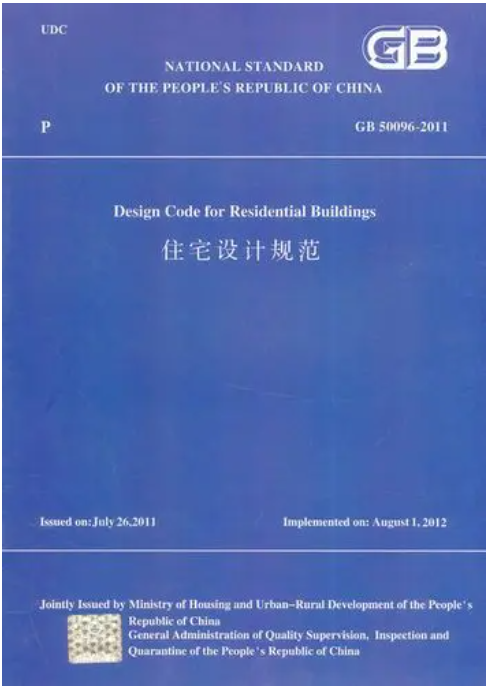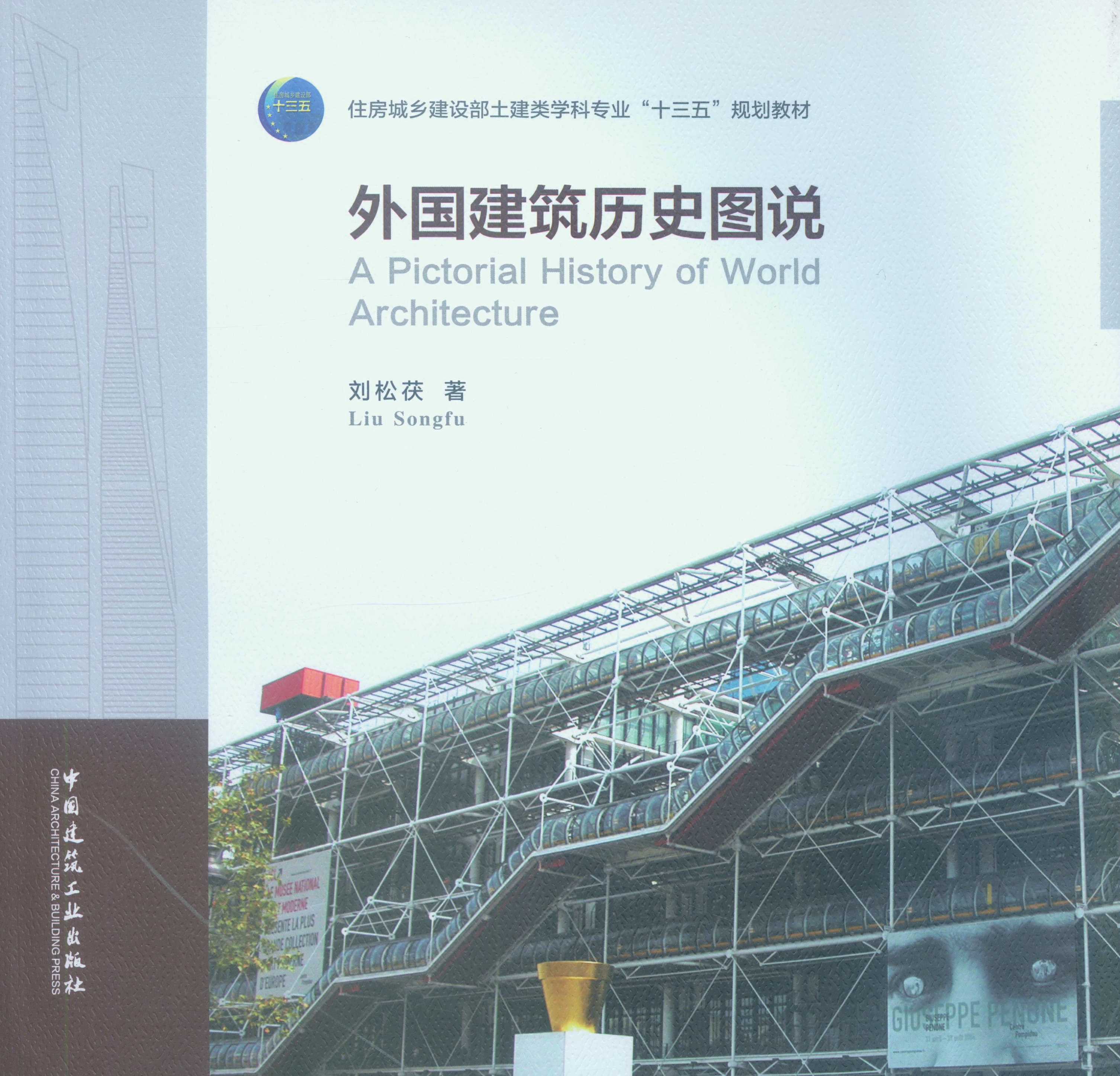发布日期:2011-07-26
实施日期:2012-08-01
主编部门:China Architecture Design and Research Group
主编单位:China Architecture Design and Research Group
主要起草人:Lin Jianping,Zhao Guanqian,Xue Feng,Wang He,Zeng Jie,Sun Minsheng,Lin Li,Chen Huaning,Liu Yanhui,Zhong Jishou,Li Yaopei,Zhu Changlian,Zhang Feifei,Ye Maoxu,Li Guiwen,Zhou Xianghua,Zhao Wenkai,Li Zhengchun,Wang Lianshun,Hu Rongguo,Li Fengyuan,Wen Biao,Zhu Xianze,Zeng Yan,Zhang Lei,Jiao Yan,Zhang Guangyu,Man Xiaoxin,Long Hao,Zhong Kaijian,Zhang Bo,Sang Shen
出版社:中国建筑工业出版社
标准书号:GB 50096-2011
出版时间:2014-10-01
During the revision,the revision group of this Code earnestly summed up experience,widely investigated and studied,referred to relevant international standards and foreign advanced standards,and finalized this Code on the basis of wide opinion solicitation as well as discussion and modification time and again.
This Code is applicable to the design of constructed,extended and renovated town residential buildings throughout the country.
According to the requirements of Document Jian Biao [2008] NO.102 issued by the MOHURD-"Notice on Printing and Publishing-Development and Revision Plan of Engineering Construction Standards in 2008 (First Batch)",China Architecture Design and Research Group and other organizations concerned revised "Design Code for Residential Buildings" (GB 50096-1999,Edition 2003) and formulated this Code.
During the revision,the revision group of this Code earnestly summed up experience,widely investigated and studied,referred to relevant international standards and foreign advanced standards,and finalized this Code on the basis of wide opinion solicitation as well as discussion and modification time and again.
This Code comprises eight chapters with the main technical contents as follows:General Provisions;Terms;Basic Requirement;Calculation of Technical and Economic Indicators;Space within the Dwelling Unit;Common Facilities;Interior Environment;Building Equipment.
The significant changes of this revision include:
1The classification of residential building dwelling unit,the minimum utilization area of each room,the calculation of technical and economic indicators,the setup of storied buildings,elevators and post box were revised;
2Terms were added;
3The contents related to energy conservation,interior environment,building equipment and exhaust passage were broadened.
The provisions printed in bold type in this Code are compulsory and must be enforced strictly.
The Ministry of Housing and Urban-rural Development is in charge of the administration of this Code and is responsible for the explanation of the compulsory provisions;China Architecture Design and Research Group is responsible for the explanation of specific technical contents.If there are any provisions necessary to revise or supplement during the process of implementing this Code,the relevant opinions,advice and relevant data can be kindly posted or passed on to the national residential building engineering center of China Architecture Design and Research Group (No.19,Chegongzhuang Street,Xicheng District,100044,Beijing,China) for future reference.
Chief Development Organization:
China Architecture Design and Research Group
Participating Development Organizations:
China Construction Engineering Design Group Corporation Limited
China Academy of Building Research.
Beijing Institute of Architectural Design
Central-South Architectural Design Institute Co.,Ltd.
Shanghai Construction Design and Research Institute Co.,Ltd.
China Academy of Urban Planning&Design
Architectural Design and Research Institute of Tsinghua University Co.,Ltd.
School of Architecture of Harbin Institute of Technology
Hunan Academy of Building Research
Guangdong Academy of Building Research
Faculty of Architecture and Urban Planning,Chongqing University
Chongqing Designing Institute
Participating Organizations:
Tianjin Urban Planning&Design Institute
International Copper Association (China)
Dalian Jiuzhou Architecture Group
Chief Drafting Staff:
Lin Jianping Zhao Guanqian Xue Feng Wang He Zeng Jie Sun Minsheng Lin Li Chen Huaning Liu Yanhui Zhong Jishou Li Yaopei Zhu Changlian Zhang Feifei Ye Maoxu Li Guiwen Zhou Xianghua Zhao Wenkai Li Zhengchun Wang Lianshun Hu Rongguo Li Fengyuan Wen Biao Zhu Xianze Zeng Yan Zhang Lei Jiao Yan Zhang Guangyu Man Xiaoxin Long Hao Zhong Kaijian Zhang Bo Sang Shen
Chief Examiners:
Xu Zhengzhong Dou Yide Chen Yongjiang Chen Yuhua Chu Zhaofo Fu Peiyong Gao Yong Hong Shengyang Lu Hong Luo Wenbing Mao Yaozeng Rong Xiangyang Wu Xiaoting Yang Decai Zhang Haifeng Zhang Xuehong Zheng Zhihong Zhou Xiaohong
Announcement of the Ministry of Housing and Urban-Rural Development of the People's Republic of China
No.1093
Announcement of Publishing the National Standard Design Code for Residential Buildings
Design Code for Residential Buildings has been approved as a national standard with a serial number of GB 50096-2011 and will be implemented from August 1,2012.Articles 5.1.1, 5.3.3, 5.4.4, 5.5.2, 5.5.3, 5.6.2, 5.6.3, 5.8.1, 6.1.1, 6.1.2, 6.1.3, 6.2.1, 6.2.2, 6.2.3, 6.2.4, 6.2.5, 6.3.1, 6.3.2, 6.3.5, 6.4.1, 6.4.7, 6.5.2, 6.6.1, 6.6.2, 6.6.3, 6.6.4, 6.7.1, 6.9.1, 6.9.6, 6.10.1, 6.10.4, 7.1.1, 7.1.3, 7.1.5, 7.2.1, 7.2.3, 7.3.1, 7.3.2, 7.4.1, 7.4.2, 7.5.3, 8.1.1, 8.1.2, 8.1.3, 8.1.4, 8.1.7, 8.2.1, 8.2.2, 8.2.6, 8.2.10, 8.2.11, 8.2.12, 8.3.2, 8.3.3, 8.3.4, 8.3.6, 8.3.12, 8.4.1, 8.4.3, 8.4.4, 8.5.3, 8.7.3, 8.7.4, 8.7.5 and 8.7.9 in this Code are compulsory provisions and must be enforced strictly.Meanwhile,the former GB 50096-1999,Edition 2003 Design Code for Residential Buildings shall be abolished simultaneously.
Authorized by Research Institute of Standards&Norms,this Code is published by China Architecture and Building Press.
Ministry of Housing and Urban-Rural Development of the People's Republic of China
July 26,2011
目录
Announcement of the Ministry of Housing and Urban-Rural Development of the People's Republic of China
Foreword
1 General Provisions
2 Terms
3 Basic Requirement
4 Calculation of Technical and Economic Indicators
5 Space Within the Dwelling Unit
5.1 Dwelling Unit
5.2 Bedroom and Living Room (Hall)
5.3 Kitchen
5.4 Bathroom
5.5 Storey Height and Interior Net Storey Height
5.6 Balcony
5.7 Passage,Storage Space and Interior Stairs
5.8 Doors and Windows
6 Common Facilities
6.1 Windowsill,Railing and Step
6.2 Emergency Evacuation
6.3 Stairs
6.4 Elevator
6.5 Gallery,Exit and Entrance
6.6 Requirements about Barrier-Free Design
6.7 Post Box
6.8 Common Exhaust Pipe
6.9 Basement and Semi-basement
6.10 Accessorial Public Rooms
7 Interior Environment
7.1 Sunlight,Natural Lighting and Shading
7.2 Natural Ventilation
7.3 Sound Insulation and Noise Reduction
7.4 Waterproof and Moistureproof
7.5 Interior Air Quality
8 Building Equipments
8.1 General Requirement
8.2 Water Supply and Sewerage
8.3 Heating
8.4 Gas
8.5 Ventilation
8.6 Air Conditioning
8.7 Electric
Explanation of Wording in This Code
5.1.1 The residential building shall be designed according to the dwelling unit; the basic functionspace such as bedroom, living room, kitchen and bathroom etc.shall be designed for each residential building.
5.3.3 The kitchen shall be equipped with wash fountain, counter top, stove, oil fume exhaustor andwater heater etc.or reserved with the position for them.
5.4.4 The bathroom shall not be directly arranged at the up-storey of the bedroom, living room(hall),kitchen and canteen of the down-storey householder.
5.5.2 The interior net storey height of the bedroom and living room(hall)shall not be less than2.40m; the partial net height shall not be less than 2.10m; the indoor area of the partial net height shall not be greater than 1/ 3 of the interior utilization area.
5.5.3 The interior net storey height of at least 1/2 of the utilization area shall not be less than2.10m if the space of the sloping roof is used as bedroom and living room(hall).
5.6.2 The design of balcony railing must adopt the construction avoiding the climbing of thechildren; the net distance between the vertical members of the railing shall not be greater than 0.11m; anti-falling measures must be taken at the section placing flowerpot.
5.6.3 The net height of the sideboard or railing of the balcony shall not be less than 1.05m for sixstoreys or less; it shall not be less than 1.10m for seven storeys or more.
5.8.1 The external window without balcony or terrace outside the window shall be equipped withsafeguard if the net height from the windowsill to the floor and ground is below 0.90m.
6.1.1 Safeguard shall be taken if the staircase and elevator lobby share part of the externalwindow, there are no balcony or terrace outside the window or the net height from the windowsill to the floor and ground is less than 0.90m.
6.1.2 Safeguard shall be taken if the shoulder height of the common exit and entrance is over 0.70mand the side is air-related, and the net height of the safeguard shall not be less than 1.05m.
6.1.3 The railing net height of the air-related section such as veranda, interior courtyard andaccessible roof for six storeys or less shall not be less than 1.05m and that for seven storeys or more shall not be less than 1.10m.The construction avoiding the climbing of children must be adopted for the protective barrier; the net distance between the vertical members of the railing shall not be greater than 0.11m.Anti-falling measures must be taken in the section placing flowerpot.
6.2.1 The emergency exit for each storey of the dwelling unit shall not be less than two for tenstoreys or less if the building area of any storey of the dwelling unit is greater than 650 m or the distance from the household door of any unit to the emergency exit is greater than 15m.
6.2.2 The emergency exit for each storey of the dwelling unit shall not be less than two for tenstoreys or more and less than 18 storeys if the building area of any storey of the dwelling unit is greater than 650 m or the distance from the household door of any unit to the emergency exit is greater than 10m.
6.2.3 The emergency exit for each storey of the dwelling unit shall not be less than two for nineteenstoreys or more residential building.
6.2.4 The emergency exits shall be dispersedly arranged; the distance between two emergencyexits shall not be less than 5m.
6.2.5 The door of the staircase and front room shall be opened to the evacuation direction.
6.3.1 The net width of the stairflight of the stairs shall not be less than 1.10m; the net width of thestairflight with the railing at one side shall not be less than 1.00m for less than or equal to six storeys residential building.
6.3.2 The tread width of the stairs shall not be less than 0.26m; the riser height shall not be greaterthan 0.175m.The handrail height shall not be less than 0.90m.The handrail height shall not be less than 1.05m if the railing length of the horizontal segment of the stairs is greater than 0.50m.The net vacancy between the vertical members of the stair railing shall not be greater than 0.11m.
6.3.5 The measures avoiding the climbing of the children must be taken if the net width of thestairwell is greater than 0.11m.
6.4.1 The elevator must be arranged for any of the following situations:
1 Residential buildings with seven storeys or more or the height from the floor of the inlet story of the householder to the design ground outside the room is over 16m;
2 The height from the floor of the inlet story of the householder of the residential building with six storeys or less whose bottom storey is used as shops or for other purposes to the design ground outside the room is over 16m;
3 The height from the floor of the inlet storey to the outdoor design ground is over 16 m for the residential buildings with six storeys or less whose bottom storey is used as the open floor or storage space;
4 The height from the floor of the inlet story for the top householder to the outdoor design ground is over 16m if the top story is the duplex apartment with a two storied unit and the part of the spring layer isn't reckoned in the storey number.
6.4.7 The elevator shall not be arranged closely near the bedroom.Where it shall be arrangedclose to the bedroom with living room function due to restricted conditions, effective sound insulation and vibration reduction measures shall be adopted.
6.5.2 The safety measures preventing the objects from falling and hurting the person shall be takenat the common exit and entrance below the balcony, side corridor, and open stair terraces.
6.6.1 The barrier-free design shall be adopted for the following parts of the residential building withseven storeys and more:
1 The entrance;
2 The entrance terrace;
3 The lift-waiting area;
4 The common walkway.
6.6.2 The barrier-free design of the entrance and entrance terrace shall meet the following requirements:
1 The wheelchair rampway and railing shall be arranged simultaneously if the steps are arranged at the entrance;
2 The gradient of the rampway shall be in accordance with those specified in Table 6.6.2;
3 The net width of the door for the wheelchair shall not be less than 0.8m;
4 The width of the wall surface at one side of the doorknob shall be not less than 0.5 m for the sliding door and side-hung door for the wheelchair;
5 The observation glass, the horizontal-held handle and door-closed handle shall be installed for the door leaf for wheelchairs; 0.35m high door-protected plank shall be installed below the door leaf;
6 The difference between the sill height of the door and the ground inside and outside the door shall not be greater than 0.015 m and the ramp shall be adopted for the transition.
6.6.3 The width of the entrance terrace shall not be less than 2.00 m for the residential buildingwith seven storeys or more and shall not be less than 1.50 m for the residential building with less than seven storeys.
6.6.4 The net width of the walkway and pass for wheelchairs shall not be less than 1.20 m.
6.7.1 Post box shall be arranged for each unit of the newly-built residential building.
6.9.1 The bedroom, living room(hall)and kitchen shall not be arranged in the basement;measures must be taken for the daylighting, ventilation, sunlight, moistureproof, draining and safety protection and the requirements of each index shall not be reduced if they are arranged in the semi-basement.
6.9.6 Grade B fire door shall be arranged for the underground building leading to the dwelling unitand shall be arranged at the entrance of the elevator hoistway; the building and the elevator hoistway must not be used for the natural draught of the underground garage.
6.10.1 The shop, workshop and warehouse storing and using fire risk articles of Category A and Band the shop, workshop and recreation facilities making noises, vibration and pollution to the environment must not be arranged in the residential building.
6.10.4 The common exit and entrance of the householder and the exit and entrance of theaccessorial public rooms shall be arranged separately.
7.1.1 There shall be one habitable zone at least which can obtain the winter sunlight for eachresidential building.
7.1.3 The direct natural lighting shall be provided for the bedroom, living room(hall)and kitchen.
7.1.5 The ratio of the window to the ground area shall not be less than 1/7 for the lighting windowof the bedroom, living room(hall)and kitchen.
7.2.1 The natural ventilation is necessary for the bedroom, living room(hall)and kitchen.
7.2.3 The aperture area for the natural ventilation of each residential building shall not be less than5%of the ground area.
7.3.1 The noise grade of the bedroom and living room(hall)shall meet the following requirements:
1 The equivalent continuous A-weighted sound pressure level in the bedroom during the day shall not be greater than 45 dB;
2 The equivalent continuous A-weighted sound pressure level in the bedroom during the night shall not be greater than 37 dB;
3 The equivalent continuous A-weighted sound pressure level in the living room(hall)shall not be greater than 45 dB.
7.3.2 The air-borne sound insulation performance of the partition wall and partition floorslab shallmeet the following requirements:
1 The air-borne sound insulation rating quantity(+)of the partition wall and partition floorslab separating the bedroom and living room(hall)shall be greater than 45 dB;
2 The air-borne sound insulation rating quantity(+)of the floor slab separating the residential building and the non-living space shall be greater than 51 dB.
7.4.1 The measures avoiding the rainwater and snowbreak water to enter the room shall be takenfor the roof, ground, external wall and the external window.
7.4.2 Under the design indoor temperature and humidity condition, there shall be no moisture condensation on the roof and the internal surface of the external wall.
7.5.3 The activity and concentration of the indoor air pollutant shall be in accordance with thosespecified in Table 7.5.3.
8.1.1 The indoor water supply and drainage system shall be arranged for the residential building.
8.1.2 The heating facilities shall be arranged for the residential building in severe cold and coldzones.
8.1.3 The lighting and power supply system shall be arranged for the residential building.
8.1.4 The setup of the measuring device shall meet the following requirements:
1 The water meter for each household shall be arranged for all kinds of the domestic water supply system;
2 The heat-measuring device for each household shall be arranged if the central heating(concentrated air conditioning)system is set up;
3 The gas meter for each household shall be arranged if the gas system is set up;
4 The electric energy meter for each household shall be arranged if the electric power system is set up.
8.1.7 The following facilities shall not be arranged in the dwelling units and shall be arranged in thecommon space:
1 The common functional pipeline include the main riser for water supply, stand pipe for fire control, stand pipe for rainwater, the return main riser for heating(air conditioning)supply, power distribution, the main line(tube)for light current etc., except the stand pipe for rainwater arranged in the open-type balcony;
2 The common pipeline valve, electrical equipment and the components used for the overall adjustment and overhaul, except the manhole of the indoor drainage standpipe;
3 The access hole of the pipe ditch for heating and cable trench.
8.2.1 The water quality of all kinds of domestic water supply systems for the dwelling shall complywith the current relevant standards of the nation.
8.2.2 The water supply pressure of the service pipe shall not be greater than 0.35 MPa.
8.2.6 The drainage standpipe for the kitchen and bathroom shall be arranged respectively.Thedrainage piping shall not pass through the bedroom.
8.2.10 The trap shall be arranged below the drainage outlet if the domestic drainage piping isconnected with the sanitary ware without the trap and the floor drain without the water seal; height of the trap and the water seal of the floor drain with water seal shall not be less than 50mm.
8.2.11 The drainpipe of the sanitary ware and the floor drain below the ground outside in thebasement and semi-basement shall not be connected with the upper drainage pipe; the water catchment facilities shall be arranged and the sump pump shall be used for the drainage.
8.2.12 The obvious mark shall be arranged at the reclaimed water pipeline and the reserved port ifthe reclaimed water is used to wash the toilet stool.The intelligence toilet lid shall be connected with the tap water pipe and must not be connected with the reclaimed water pipe if the toilet lid is installed on the toilet stool.
8.3.2 The direct electric heating as the main heat source for the indoor heating shall not bedesigned for the residential building in the severe cold and cold zones and hot summer and cold winter zones except those supported by the power policies with sufficient electric power or incapable of utilization of other types of the energy.
8.3.3 The hot water not above 95℃ shall be adopted as the heating medium for the heating systemof the residential building; the reliable safeguard measure of the water quality shall be taken.The temperature of hot water and system pressure shall be ascertained according to the factors such as the pipe material and the indoor heat dissipation equipment.
8.3.4 Thermal load calculations for each room shall be done for the central heating design of theresidential building.
8.3.6 The indoor heating calculating temperature for the ordinary residential building with heatingsystem shall not be less than the requirements of Table 8.3.6.
8.3.12 The thermal efficiency shall meet the specified value of the Grade 3 energy efficiency in thecurrent national standard "Minimum Allowable Values of Energy Efficiency and Energy Efficiency Grades for Domestic Gas Instantaneous Water Heater and Gas Fired Heating and Hot Water Combi-Boilers"(GB 20665)if the domestic gas fired heating and hot water combi-boilers are adopted as the heating heat source.
8.4.1 The gas supply pressure of the pipeline shall not be higher than 0.2 MPa.The low pressuregas shall be adopted for all kinds of gas appliances in the residential building; the inlet pressure shall be 0.75 times~1.5 times of the rated range.
8.4.3 The setup of the gas equipment shall meet the following requirements:
1 Dhe gas equipment must not be arranged in the bedroom;
2 The heating equipment which can make the harmful gas be gathered in the used space such as the direct exhaust type and semi-closed type gas water heater must not be installed in the bathroom;
3 The indoor gas stove shall be installed in the kitchen with good ventilation and the balcony;
4 The gas equipment such as the gas water heater shall be installed in the kitchen with good ventilation, the balcony or other non-residential room.
8.4.4 The exhaust gas of all kinds of gas appliances in the residential building must be discharged tothe outside of the rooms.The measures preventing the wind shall be taken for the exhaust port; the position for installation and exhaust port shall be reserved in the gas equipment room; the multiple equipment shall not affect each other if they share the vertical exhaust pipeline.The exhaust pipe of the indoor gas water heater, the exhaust pipe of the heating or refrigeration gas equipment for each household must not be combined and inserted into the same pipeline with the exhaust pipe of the oil fume exhaustor of the gas stove.
8.5.3 The mechanical ventilation facilities avoiding returning shall be arranged or the requirementsof the mechanical ventilation arrangement shall be reserved for the bathroom without the external window.
8.7.3 The distribution box for each household shall be arranged for each residential building; theswitching device which can switch off the phase wire and the neutral conductor simultaneously shall be adopted for the battery main switch device.
8.7.4 The safety type socket shall be adopted for the socket whose installation height is 1.80 m orbelow.
8.7.5 The artificial lighting shall be arranged for the common parts; the economical and efficientlighting device and measures of energy conservation and control shall be adopted.The emergency lighting measures during the fire control must be taken if the energy conservation and self-extinguishing switch is adopted for the emergency lighting.
8.7.9 The entrance guard on the evacuation route or at the exit and entrance shall be able to beunlocked intensively or be unlocked manually from the inside in case of fire alarm.









